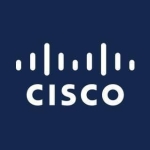My main use case for Palo Alto Networks NG Firewalls is zone protection.
I use zone protection with Palo Alto Networks NG Firewalls by defining external and internal zones, and traffic flows accordingly based on whether the user is coming from the Internet or from an internal source.
Palo Alto Networks NG Firewalls' application context, traffic flow, netting, and other features help provide protection in a more secure way.
The best features Palo Alto Networks NG Firewalls offers include AI powered threat prevention, unknown attacks, comprehensive cloud delivery security services such as URL filtering, Wildfire, Panorama for centralized management, DLP for data loss prevention, zero trust capabilities for secure access, traffic visibility and control, global protect (GPCS), and scalability.
I find myself relying mostly on application-based policy enforcement, user identification using LDAPs, and URL filtering.
GlobalProtect is crucial for secure remote access, as it helps us create a VPN for employees working from home to securely access resources from external to internal.
Palo Alto Networks NG Firewalls has positively impacted my organization as it is very advanced, providing all the features in one place.
Since implementing Palo Alto Networks NG Firewalls, I have noticed that the Panorama dashboard saves time because instead of checking different devices, I can view everything in one place, allowing for easier troubleshooting.
We can improve Palo Alto Networks NG Firewalls by adding more features that may work on older versions of Panorama; however, I appreciate what we currently have and believe there is no need for major improvements.
I have been using Palo Alto Networks NG Firewalls for the last five years.
Palo Alto Networks NG Firewalls is very stable.
Palo Alto Networks NG Firewalls is designed for scalability through hardware modality, with its PH series firewalls and cloud solutions such as VM series that dynamically scale in public cloud environments such as AWS and OCI.
Customer support for Palo Alto Networks NG Firewalls is user-friendly.
Before using Palo Alto Networks NG Firewalls, I was using Checkpoint.
I switched from Checkpoint to Palo Alto Networks NG Firewalls because it features a more user-friendly dashboard along with advanced capabilities such as URL filtering, threat prevention, app ID, and content ID.
I have seen a return on investment since using Palo Alto Networks NG Firewalls in terms of time saved.
I do not have much experience with pricing, setup costs, and licensing; however, setup costs are not publicly listed and involve hardware purchase, virtual machine costs, and licensing for security subscriptions such as Federation and URL filtering.
Before choosing Palo Alto Networks NG Firewalls, I evaluated other options such as monitoring tools from Netgears.
My advice for others looking into using Palo Alto Networks NG Firewalls is to leverage their next generation firewall capabilities by implementing a phased customized deployment, segmenting your network with zones, and applying granular security policies based on app ID.
Palo Alto Networks NG Firewalls provides comprehensive network security by identifying and controlling applications, users, and content at the application layer, featuring app ID and user ID, which enhances the user experience.
On a scale of 1-10, I rate Palo Alto Networks NG Firewalls a 10.














